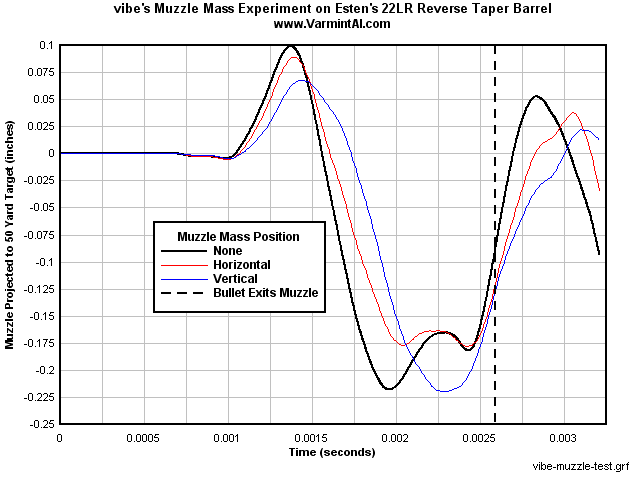L
Lynn
Guest
Boyd
I think that the real problem that has arisen about Calfee's work is entirely about his choice of words. If he had simply said, when I configure this way, I get this effect, there would have been nothing to argue about.
Well said Boyd.
I don't think you could see what's occurring on a video. But call it what you want there is an area that appears to be completely stopped with vibration on both sides. You can even clamp it with you thumb and forefinger and it will not affect the right and left vibrations. Whatever nomenclature you use, it's easy to see why Bill refers to it as the "parallel node".
Here is a post by someone looking at what Bill is trying to convey.Vibe is correct in his description but I think most highschool graduates knew what Bill was trying to convey 7 years ago.Its a shame with the internet and all the brain power here today it couldn't be explained in simple enough terms so that a simple country boy could understand it.Teaching a student to understand the math is always better than just getting the answer right in my humble opinion.
As you know my tuner posted above can be rotated many times.The problem with it's design is that I might have the weight the right distance in front of the crown but the antenna arms may be XX degrees out of phase.
My rifle needs 11-13 ounces on it for best results but that tuner body being made out of stainless takes away half of my available tuning range on the extended arms.The next hurdle is the big washers used to add the weight make your scope blurr up.
I am now going with an aluminum body fitted with a snug fitting aluminum shaft collar that has the extendable arms muonting hardware welded in place.I will then add weight until the vertical error is gone then loosen up a single setscrew and rotate the arm without advancing or retracting the weight.The shaft collar will butt up against a shoulder.Right now turning the arms 90 degrees throws the rifle out of tune.If I remove the arms turning the tuner 90 degrees also throws the rifle out of tune.
I have some very short and very long arms as well and will try a single arm with all of the required weight on it as well.
Lynn
I think that the real problem that has arisen about Calfee's work is entirely about his choice of words. If he had simply said, when I configure this way, I get this effect, there would have been nothing to argue about.
Well said Boyd.
I don't think you could see what's occurring on a video. But call it what you want there is an area that appears to be completely stopped with vibration on both sides. You can even clamp it with you thumb and forefinger and it will not affect the right and left vibrations. Whatever nomenclature you use, it's easy to see why Bill refers to it as the "parallel node".
Here is a post by someone looking at what Bill is trying to convey.Vibe is correct in his description but I think most highschool graduates knew what Bill was trying to convey 7 years ago.Its a shame with the internet and all the brain power here today it couldn't be explained in simple enough terms so that a simple country boy could understand it.Teaching a student to understand the math is always better than just getting the answer right in my humble opinion.
As you know my tuner posted above can be rotated many times.The problem with it's design is that I might have the weight the right distance in front of the crown but the antenna arms may be XX degrees out of phase.
My rifle needs 11-13 ounces on it for best results but that tuner body being made out of stainless takes away half of my available tuning range on the extended arms.The next hurdle is the big washers used to add the weight make your scope blurr up.
I am now going with an aluminum body fitted with a snug fitting aluminum shaft collar that has the extendable arms muonting hardware welded in place.I will then add weight until the vertical error is gone then loosen up a single setscrew and rotate the arm without advancing or retracting the weight.The shaft collar will butt up against a shoulder.Right now turning the arms 90 degrees throws the rifle out of tune.If I remove the arms turning the tuner 90 degrees also throws the rifle out of tune.
I have some very short and very long arms as well and will try a single arm with all of the required weight on it as well.
Lynn
Last edited by a moderator:



